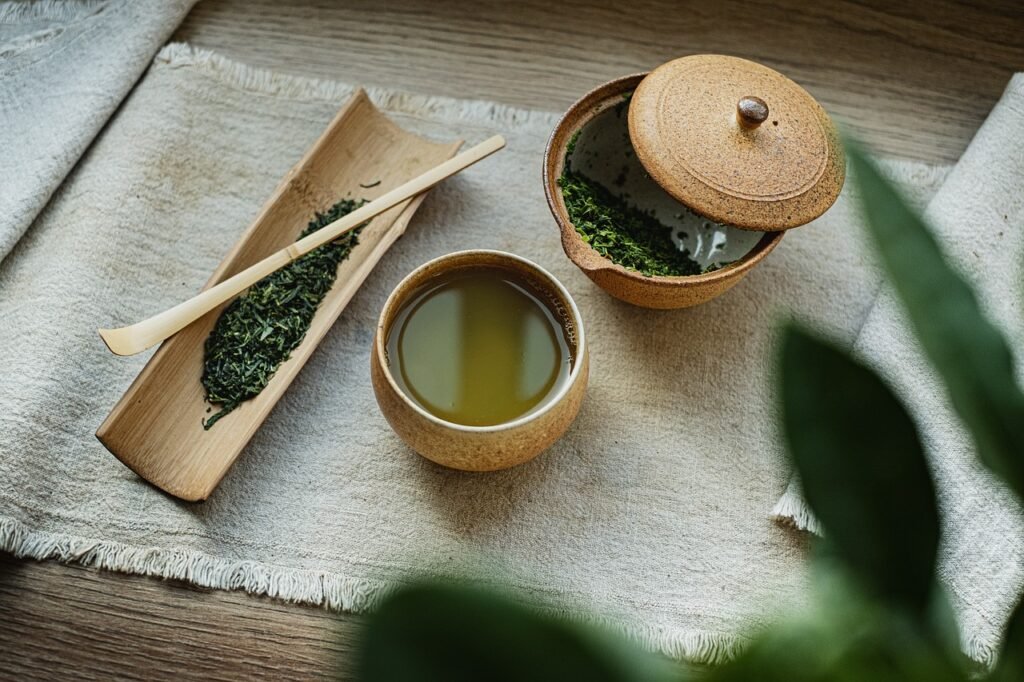This post may contain affiliate links. Which means I may receive a commission for purchases made through links, at no cost to you. I will only recommend products that I have personally used. Learn more on my Disclaimer Page and Privacy Policy Page



White Willow Bark
White willow bark, from the Salix alba tree, has long been esteemed for its natural pain-relieving properties. Rich in salicin, a compound akin to aspirin, white willow bark offers potent analgesic and anti-inflammatory effects, making it a popular choice for alleviating various types of pain, including headaches, muscle aches, menstrual cramps, and joint discomfort associated with conditions like arthritis. Its ability to inhibit prostaglandin synthesis contributes to its efficacy in reducing inflammation and swelling, offering relief from the discomfort caused by inflammatory conditions such as tendonitis and bursitis. Moreover, its historical use in fever reduction underscores its potential to mitigate febrile conditions by addressing the underlying inflammatory processes.
Beyond pain relief, white willow bark exhibits antioxidant properties, helping to combat oxidative stress by scavenging harmful free radicals in the body. This antioxidant activity may contribute to its broader health benefits, potentially supporting cardiovascular health and reducing the risk of chronic diseases associated with oxidative damage. Additionally, white willow bark’s astringent and antimicrobial properties make it a valuable ingredient in topical skincare formulations, where it may aid in improving acne, eczema, and other dermatological concerns. While white willow bark offers promising health benefits, it’s essential to exercise caution and seek guidance from a healthcare professional, particularly for individuals with underlying medical conditions or those taking medications, as it may interact with certain drugs and cause adverse effects.
- Natural Pain Reliever: White willow bark contains salicin, a compound similar to aspirin, which gives it its pain-relieving and anti-inflammatory properties. It has been used traditionally to alleviate pain, including headaches, muscle aches, menstrual cramps, and joint pain associated with conditions like osteoarthritis and rheumatoid arthritis.
- Anti-inflammatory Effects: In addition to its pain-relieving properties, white willow bark also exhibits anti-inflammatory effects, making it effective in reducing inflammation and swelling associated with various inflammatory conditions. It works by inhibiting the production of prostaglandins, which are hormone-like substances involved in inflammation.
- Fever Reducer: White willow bark has antipyretic properties, meaning it can help reduce fever. It has been used traditionally to lower fever and relieve symptoms of common colds and flu.
- Cardiovascular Support: Some studies suggest that white willow bark may have cardiovascular benefits, including improving blood flow, reducing the risk of blood clots, and lowering blood pressure. However, more research is needed to confirm these effects.
- Digestive Health: White willow bark has been used traditionally to soothe digestive discomfort and relieve symptoms of gastrointestinal disorders like indigestion, bloating, and diarrhea.
- Skin Health: White willow bark extract is commonly used in skincare products for its astringent, anti-inflammatory, and antimicrobial properties. It can help reduce acne, soothe irritation, and promote skin healing.
- Migraine Relief: Some people use white willow bark as a natural remedy for migraines, finding relief from headache pain and associated symptoms. It may be used alone or in combination with other herbs or supplements for migraine management.
- Forms of Administration: White willow bark is available in various forms, including capsules, tablets, extracts, and teas. It is commonly standardized to contain a specific concentration of salicin for consistency and potency.
- Safety Considerations: While white willow bark is generally considered safe for most people when used appropriately, it may not be suitable for everyone. Individuals who are allergic to aspirin or have bleeding disorders, gastrointestinal ulcers, or kidney disease should avoid white willow bark. Pregnant or breastfeeding women and children should also avoid it.
Boswellia
Boswellia’s ability to alleviate pain stems primarily from its potent anti-inflammatory properties. The boswellic acids found in Boswellia serrata resin inhibit the activity of pro-inflammatory enzymes such as 5-lipoxygenase (5-LOX) and cyclooxygenase (COX), as well as pro-inflammatory cytokines like tumor necrosis factor-alpha (TNF-α). By interfering with these inflammatory pathways, Boswellia helps to reduce the production of inflammatory mediators and the subsequent inflammatory response in the body. This action effectively mitigates swelling, stiffness, and discomfort in joints affected by conditions like osteoarthritis and rheumatoid arthritis, as well as other inflammatory ailments. Boswellia’s anti-inflammatory effects contribute to pain relief by addressing the underlying cause of pain, which is often inflammation. By suppressing inflammation, Boswellia not only alleviates pain directly but also helps to improve joint function and mobility. Unlike conventional pain medications such as nonsteroidal anti-inflammatory drugs (NSAIDs), which can have adverse effects on the gastrointestinal tract and other organs, Boswellia offers a more natural and potentially safer alternative for managing chronic pain associated with inflammatory conditions. Its efficacy in pain management, coupled with its favorable safety profile, makes Boswellia a valuable option for individuals seeking relief from inflammatory-related pain without the risk of significant side effects.
- Traditional Use: Boswellia has a long history of use in traditional medicine, particularly in Ayurveda and Traditional Chinese Medicine (TCM). It has been used for centuries to treat a variety of ailments, including inflammatory conditions, arthritis, asthma, and digestive disorders.
- Active Compounds: Boswellia contains bioactive compounds called boswellic acids, which are believed to be responsible for its therapeutic effects. These acids, including AKBA (acetyl-11-keto-beta-boswellic acid), exhibit anti-inflammatory, analgesic, and anti-arthritic properties.
- Anti-inflammatory Effects: Boswellia is most well-known for its potent anti-inflammatory effects, which make it effective in reducing inflammation and swelling associated with conditions like osteoarthritis, rheumatoid arthritis, and inflammatory bowel diseases (IBD). Boswellic acids inhibit pro-inflammatory enzymes and cytokines, thereby suppressing the inflammatory response in the body.
- Pain Relief: In addition to its anti-inflammatory properties, Boswellia also has analgesic effects, making it effective in relieving pain associated with inflammatory conditions. It can help alleviate joint pain, muscle pain, and other types of pain related to inflammation.
- Respiratory Support: Boswellia has been traditionally used to support respiratory health and alleviate symptoms of asthma, bronchitis, and chronic obstructive pulmonary disease (COPD). It exhibits bronchodilatory effects and helps reduce inflammation in the airways, making breathing easier.
- Gastrointestinal Benefits: Boswellia is believed to promote digestive health and alleviate symptoms of gastrointestinal disorders like indigestion, bloating, and IBD. It may help reduce inflammation in the gastrointestinal tract and improve digestion.
- Skin Health: Boswellia’s anti-inflammatory and antimicrobial properties make it beneficial for certain skin conditions, including acne, eczema, and psoriasis. It can help reduce inflammation, soothe irritation, and promote skin healing.
- Cognitive Support: Some studies suggest that Boswellia may have neuroprotective effects and could potentially support cognitive function. It may help protect against neurodegenerative diseases and age-related cognitive decline.
- Immune Modulation: Boswellia has been shown to modulate the immune response, potentially supporting immune system function and reducing the severity of autoimmune conditions.
Capsaicin
Capsaicin, the active component in chili peppers responsible for their heat, offers notable pain-relieving benefits. When applied topically, capsaicin interacts with sensory nerve endings in the skin, leading to a sensation of warmth and temporary desensitization to pain. This mechanism works through the depletion of substance P, a neurotransmitter involved in transmitting pain signals to the brain. As a result, capsaicin creams and patches are commonly used to alleviate various types of pain, including arthritis pain, neuropathic pain, and musculoskeletal pain, providing localized relief without the systemic side effects often associated with oral pain medications.
Capsaicin’s pain-relieving effects extend beyond its immediate application site. Research suggests that regular use of capsaicin products can lead to long-term pain reduction by desensitizing nerve fibers and reducing the intensity of pain signals over time. While capsaicin may cause a temporary burning or stinging sensation upon initial application, this discomfort typically diminishes with continued use, allowing individuals to experience lasting relief from chronic pain conditions. As a readily available and affordable option for pain management, capsaicin offers a convenient alternative for those seeking effective, non-pharmacological approaches to pain relief.
- Chemical Structure: Capsaicin belongs to a group of chemicals known as capsaicinoids, with capsaicin being the most abundant and biologically active compound. It is an alkaloid compound with the molecular formula C18H27NO3.
- Heat Sensation: Capsaicin activates sensory neurons in the mouth and skin, particularly those associated with the perception of heat and pain. This activation triggers a burning sensation, which is often described as spicy or hot.
- Scoville Heat Units (SHU): The spiciness or heat of chili peppers is measured on the Scoville scale, which quantifies the concentration of capsaicinoids. Pure capsaicin has a Scoville rating of around 16 million SHU, while milder peppers like bell peppers have a rating of 0 SHU.
- Pain Relief: Despite its ability to cause temporary discomfort, capsaicin also has pain-relieving properties. When applied topically, capsaicin binds to pain receptors called TRPV1 receptors, leading to desensitization and reduced transmission of pain signals to the brain. This mechanism makes capsaicin a common ingredient in topical creams and patches for relieving muscle and joint pain, neuropathic pain, and even migraine headaches.
- Metabolism and Weight Loss: Capsaicin has been shown to increase metabolism and promote fat oxidation, which may aid in weight loss and management. Some studies suggest that capsaicin supplementation or consumption of spicy foods may enhance calorie expenditure and fat burning.
- Cardiovascular Health: Capsaicin has vasodilatory effects, which means it can widen blood vessels and improve circulation. It may also help lower blood pressure and reduce the risk of cardiovascular diseases like heart attacks and strokes.
- Anti-inflammatory and Antioxidant Properties: Capsaicin exhibits anti-inflammatory and antioxidant properties, which may help reduce inflammation, protect against oxidative stress, and support overall health and well-being.
- Digestive Health: Contrary to popular belief, capsaicin consumption does not cause stomach ulcers or damage the digestive tract. In fact, capsaicin may help improve digestion by stimulating gastric secretions and enhancing nutrient absorption.
- Culinary Uses: Capsaicin is widely used as a culinary spice, adding heat and flavor to dishes in various cuisines around the world. It is commonly found in spicy sauces, hot peppers, curry powders, and other spicy foods.
Arnica
Arnica, a plant native to Europe and North America, is renowned for its potential pain-relieving benefits, particularly when applied topically. Arnica contains compounds like sesquiterpene lactones and flavonoids, which possess anti-inflammatory and analgesic properties. When used in topical formulations such as creams, gels, or ointments, arnica can help alleviate pain associated with bruises, sprains, muscle aches, and joint stiffness. Its anti-inflammatory action reduces swelling and inflammation at the site of injury or trauma, promoting faster healing and relieving discomfort. Arnica’s analgesic properties also contribute to pain relief by dulling sensations of pain and soreness, making it a popular natural remedy for addressing minor injuries and sports-related muscle strain.
Arnica’s pain-relieving benefits extend beyond its anti-inflammatory and analgesic actions. This herbal remedy is believed to enhance blood circulation to the affected area, facilitating the removal of metabolic waste products and promoting tissue repair. By improving blood flow, arnica supports the body’s natural healing processes, helping to reduce recovery time and minimize pain associated with injuries. While arnica is generally considered safe for topical use, it’s essential to avoid applying it to broken skin or mucous membranes, as it may cause irritation. Additionally, individuals with allergies to plants in the Asteraceae family should exercise caution when using arnica products. Overall, arnica serves as a valuable natural option for relieving pain and promoting healing, offering a gentle yet effective approach to managing minor aches and injuries.
- Traditional Use: Arnica has a long history of traditional use in folk medicine for its anti-inflammatory and analgesic properties. It has been used topically to soothe bruises, sprains, muscle aches, and joint pain. Arnica preparations may also be used for skin conditions like eczema, acne, and insect bites.
- Active Compounds: Arnica contains various active compounds, including sesquiterpene lactones (such as helenalin and dihydrohelenalin), flavonoids, and volatile oils. These compounds are believed to contribute to Arnica’s anti-inflammatory, analgesic, and antimicrobial effects.
- Anti-inflammatory Effects: Arnica is most commonly known for its anti-inflammatory properties, which make it effective in reducing inflammation and swelling associated with injuries and inflammatory conditions like arthritis. It works by inhibiting pro-inflammatory cytokines and enzymes, thereby alleviating pain and promoting healing.
- Pain Relief: Arnica is often used for its pain-relieving effects, particularly for sore muscles, bruises, and sprains. When applied topically, Arnica can help reduce pain and discomfort by numbing the affected area and promoting blood flow to the injured tissues.
- Forms of Administration: Arnica is available in various forms, including creams, ointments, gels, tinctures, and homeopathic pellets. It can be applied topically to the skin or taken orally in homeopathic preparations. However, oral ingestion of Arnica should be done with caution, as large doses can be toxic.
- Safety Considerations: While Arnica is generally considered safe for topical use when applied to unbroken skin, it should not be applied to open wounds or mucous membranes. Oral ingestion of Arnica can be toxic and should be avoided, especially in large doses. Pregnant or breastfeeding women and young children should also avoid using Arnica without consulting a healthcare professional.
- Research and Evidence: Although Arnica has a long history of traditional use, scientific research on its effectiveness is somewhat limited. Some studies have suggested that Arnica may be effective in reducing pain and inflammation, but more research is needed to confirm its efficacy and safety.
Devils Claw
Devil’s claw, scientifically known as Harpagophytum procumbens, is a plant native to southern Africa that has been traditionally used for its medicinal properties. One of its primary benefits lies in its potential to alleviate pain, particularly in conditions such as arthritis, osteoarthritis, and lower back pain. Devil’s claw contains active compounds called iridoid glycosides, notably harpagoside, which exhibit anti-inflammatory and analgesic effects. These compounds work by inhibiting inflammatory enzymes and reducing the production of inflammatory mediators, thereby easing joint stiffness, swelling, and discomfort associated with inflammatory conditions. Its ability to modulate the body’s inflammatory response makes devil’s claw a promising natural remedy for those seeking relief from chronic pain without the side effects commonly associated with conventional pain medications.
Moreover, devil’s claw may also offer benefits for digestive health. Traditionally used as a digestive tonic by indigenous peoples of Africa, devil’s claw is believed to stimulate gastric secretions and improve appetite. Additionally, its bitter principles are thought to enhance digestive function by promoting the production of digestive juices and enzymes, aiding in the breakdown and absorption of nutrients. Some individuals use devil’s claw to alleviate symptoms of indigestion, bloating, and gastrointestinal discomfort, finding relief from mild digestive disturbances through its gentle yet effective action. While devil’s claw is generally well-tolerated, it’s essential to consult with a healthcare professional before use, especially for individuals with underlying health conditions or those taking medications, as it may interact with certain drugs.
- Traditional Use: Devil’s claw has a long history of traditional use among indigenous peoples in southern Africa, who have used it for centuries to treat a variety of ailments, including arthritis, digestive disorders, and fever.
- Active Compounds: The medicinal properties of Devil’s claw are attributed to its active compounds, including iridoid glycosides such as harpagoside. These compounds are believed to possess anti-inflammatory, analgesic, and antioxidant properties.
- Anti-inflammatory Effects: Devil’s claw is most commonly known for its anti-inflammatory effects, which make it a popular natural remedy for conditions such as osteoarthritis, rheumatoid arthritis, and musculoskeletal pain. It works by inhibiting pro-inflammatory enzymes and reducing inflammation in the body.
- Pain Relief: In addition to its anti-inflammatory properties, Devil’s claw is also used for its pain-relieving effects. It is believed to help alleviate joint pain, muscle pain, and other types of pain associated with inflammatory conditions.
- Digestive Support: Devil’s claw has traditionally been used to support digestive health and alleviate symptoms of indigestion, bloating, and gastrointestinal discomfort. It is believed to stimulate gastric secretions and improve digestion.
- Research and Evidence: While Devil’s claw has a long history of traditional use, scientific research on its effectiveness is limited. Some studies have shown promising results for its use in treating arthritis and other inflammatory conditions, but more research is needed to confirm its efficacy and safety.
- Forms of Administration: Devil’s claw is typically consumed in the form of capsules, tablets, extracts, or topical creams. It can also be brewed into a tea, although its bitter taste may make it less palatable than other herbal teas.
- Safety and Precautions: Devil’s claw is generally considered safe for most people when used appropriately, but it may interact with certain medications, including blood thinners and stomach acid reducers. Pregnant or breastfeeding individuals should consult with a healthcare professional before using Devil’s claw.
Kratom
Kratom, derived from the leaves of the Mitragyna speciosa tree native to Southeast Asia, has gained attention for its potential pain-relieving properties. The active compounds in kratom, particularly mitragynine and 7-hydroxymitragynine, interact with opioid receptors in the brain, leading to pain relief similar to that of opioids but with potentially fewer respiratory depressant effects. Kratom’s pain-relieving benefits are diverse, with users reporting relief from various types of pain, including chronic pain conditions such as fibromyalgia, arthritis, and neuropathic pain. Additionally, kratom’s analgesic effects are often accompanied by feelings of relaxation and euphoria, which can further contribute to its pain-relieving effects and improve overall well-being.
Furthermore, kratom’s pain-relieving benefits may extend beyond its direct action on opioid receptors. Some research suggests that kratom’s alkaloids also interact with other neurotransmitter systems, including serotonin and norepinephrine pathways, which play roles in pain perception and mood regulation. By modulating these neurotransmitter systems, kratom may offer multifaceted pain relief, addressing both the physical and emotional aspects of pain. However, it’s essential to approach kratom use with caution, as it can be habit-forming and may lead to dependence or withdrawal symptoms with prolonged or excessive use. Additionally, kratom’s safety profile and legal status vary by region, so it’s crucial to research local regulations and consult with a healthcare professional before considering kratom as a pain management option.
- Traditional Use: Kratom has a long history of traditional use in its native regions, where it has been used for centuries by indigenous peoples for its stimulating and pain-relieving properties. It was traditionally chewed, brewed into tea, or used in traditional medicine practices.
- Active Compounds: Kratom contains over 40 different alkaloids, with the two primary psychoactive compounds being mitragynine and 7-hydroxymitragynine. These alkaloids interact with opioid receptors in the brain, producing effects similar to opioids, including pain relief, relaxation, and euphoria.
- Stimulant and Sedative Effects: Depending on the dosage and strain, Kratom can exhibit both stimulant and sedative effects. At lower doses, it tends to be more stimulating, providing increased energy, alertness, and sociability. At higher doses, it tends to be more sedating, producing feelings of relaxation and calmness.
- Potential Benefits: Advocates of Kratom claim that it has various potential benefits, including pain relief, mood enhancement, anxiety reduction, and opioid withdrawal symptom relief. Some users also report improved focus, sociability, and motivation.
- Regulatory Status: Kratom’s legal status varies by country and region. While it is legal in many countries, including the United States (except for some states and municipalities where it is banned), several countries have banned its sale and use due to concerns about its safety and potential for abuse.
- Safety Concerns: Kratom has been associated with various potential adverse effects, including nausea, vomiting, constipation, dizziness, drowsiness, and respiratory depression at high doses. Long-term and excessive use of Kratom may also lead to dependence, tolerance, and withdrawal symptoms upon discontinuation.
- Research and Regulation: Despite its widespread use, there is limited scientific research on Kratom’s safety and efficacy. The U.S. Food and Drug Administration (FDA) has raised concerns about Kratom’s potential risks and has issued warnings about its use, urging consumers to avoid products containing Kratom.
- Cultural and Recreational Use: Kratom has gained popularity in Western countries in recent years, particularly among individuals seeking alternative remedies for pain management, mood enhancement, and opioid withdrawal. It is also sometimes used recreationally for its psychoactive effects.
White Willow bark Tea
To make white willow bark tea, you can follow these simple steps:
- Start by obtaining dried white willow bark from a reputable source. You can find it at health food stores or online herbal retailers.
- Measure out approximately 1-2 teaspoons of dried white willow bark per cup of water.
- Bring water to a boil in a pot or kettle.
- Add the dried white willow bark to the boiling water and reduce heat to a simmer.
- Allow the mixture to simmer for about 10-15 minutes, allowing the bark to infuse into the water and extract its beneficial compounds.
- Remove the pot from heat and let the tea steep for an additional 5-10 minutes.
- Strain the tea to remove the bark particles, then pour it into cups for serving.
- Optionally, you can sweeten the tea with honey or add lemon for flavor.
When consumed as a tea, white willow bark may offer potential benefits for pain relief, particularly for headaches, muscle aches, and joint pain due to its anti-inflammatory and analgesic properties. However, it’s essential to use caution and consult with a healthcare professional before using white willow bark or any herbal remedy, especially if you have underlying health conditions or are taking medications. Pregnant or breastfeeding individuals should also avoid using white willow bark due to potential risks. Additionally, excessive consumption of white willow bark tea can lead to side effects such as stomach irritation, so it’s advisable to consume it in moderation and discontinue use if any adverse reactions occur.
Boswellia Tea
- Boswellia Tea: To make boswellia tea, you’ll need boswellia resin or powder, which you can find at health food stores or online herbal retailers. Follow these steps:
- Boil water in a pot or kettle.
- Add 1-2 teaspoons of boswellia resin or powder per cup of water to a tea infuser or directly into the boiling water.
- Allow the mixture to simmer for about 10-15 minutes to extract the beneficial compounds from the boswellia.
- Remove from heat and let it steep for an additional 5-10 minutes.
- Strain the tea to remove any particles, then pour it into cups for serving.
- You can add honey or lemon for flavor if desired.
- Herbal Remedies: Boswellia can also be used in various herbal remedies, including creams, ointments, and salves, for topical application. You can mix boswellia resin or powder with carrier oils like coconut oil or olive oil to create a soothing balm for joint pain, muscle soreness, or skin conditions. Additionally, boswellia extract can be encapsulated or combined with other herbs to create supplements for internal use, offering benefits for inflammation, pain relief, and overall wellness.
When using boswellia tea or herbal remedies, it’s essential to use quality ingredients and consult with a healthcare professional, especially if you have underlying health conditions or are taking medications. While boswellia is generally considered safe for most people, it may interact with certain medications or have contraindications for specific health conditions
Devils Claw Tea
Here’s a simple recipe for devil’s claw tea:
Ingredients:
- 1 teaspoon dried devil’s claw root (or 1 tablespoon if using fresh)
- 1 cup water
- Honey or lemon (optional, for flavor)
Instructions:
- Boil water in a pot or kettle.
- Place the dried devil’s claw root in a tea infuser or directly into a teapot.
- Pour the boiling water over the devil’s claw root.
- Cover and let the tea steep for about 10-15 minutes to extract the beneficial compounds.
- Remove the tea infuser or strain the tea to remove the root.
- Add honey or lemon if desired for flavor.
- Allow the tea to cool slightly before enjoying.
This devil’s claw tea offers potential benefits for pain relief, particularly for conditions like arthritis, muscle aches, and joint discomfort. Devil’s claw contains harpagosides, which are believed to have anti-inflammatory and analgesic effects, making it a popular natural remedy for addressing various types of pain. As with any herbal remedy, it’s important to consult with a healthcare professional before using devil’s claw tea, especially if you have underlying health conditions or are taking medications. Pregnant or breastfeeding individuals should avoid devil’s claw due to potential risks.

Kratom Tea
Ingredients:
- 1-2 teaspoons of Kratom powder or crushed Kratom leaves
- 2-4 cups of water
- Optional: sweeteners like honey, sugar, or flavored syrups
- Optional: lemon or citrus juice to enhance flavor
Instructions:
- Bring the water to a gentle boil in a pot.
- Add the Kratom powder or crushed leaves to the boiling water.
- Lower the heat and let the mixture simmer for about 10-15 minutes.
- Stir occasionally to ensure the Kratom is thoroughly mixed into the water.
- Remove the pot from the heat and let the tea cool for a few minutes.
- Strain the tea through a fine mesh sieve or cheesecloth to remove any plant material.
- If desired, add sweeteners or citrus juice to taste and stir until dissolved.
- Serve the Kratom tea hot or cold, according to your preference.
Keep in mind that the effects of Kratom can vary depending on factors like dosage, strain, and individual sensitivity. It’s essential to use Kratom responsibly and avoid consuming excessive amounts. Additionally, consult with a healthcare professional before using Kratom, especially if you have underlying health conditions or are taking medications.





